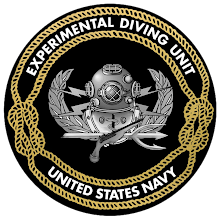Probabilistic models of decompression sickness (DCS) were developed to combine the data from laboratory run decompression trials with controlled depth, time, temperature and exercise profiles with DCS as the measured outcome. The parameters of the models are found through an iterative process that search for the values that provide the best fit between the models prediction and the measured outcomes.
The US Navy's development of probabilistic decompression models starts with Dr Weathersby Paper:
Weathersby PK, Homer LD, Flynn ET. On the Likelihood of Decompression Sickness. J Appl Physiol: Respir Environ Exercise Physiol 1984; 57:815-825 Available from: http://jap.physiology.org/
The model was expanded to use the time of occurrence of the DCS outcomes as part of the fitting process:
Weathersby PK, Survanshi SS, Homer LD, Parker E, Thalmann ED. Predicting the Time of occurrence of decompression sickness. J Appl Physiol 1992; 72:1541-1548 Available from: http://jap.physiology.org/
Most of the Navy's technical reports issued out of NEDU, NMRC, and NSMRL (and other diving labs) that have been deemed to be suitable for public release (distribution statement A) are available for free download through the Rubicon Foundations website. The research that was behind the above two papers was documented in greater detail in a series of Technical Reports entitled "Statistically Based Decompression Tables" Numbered I through XII that should be easier to access. Eleven of the Statistically Based Decompression Tables" Technical reports are available from Naval Medical Research Center (NMRC) Collection on the Rubicon site: http://archive.rubicon-foundation.org/dspace/handle/123456789/3126
The links for these technical reports are:
I http://archive.rubicon-foundation.org/3402
II http://archive.rubicon-foundation.org/3403
III http://archive.rubicon-foundation.org/3404
IV http://archive.rubicon-foundation.org/3405
V http://archive.rubicon-foundation.org/3406
VI http://archive.rubicon-foundation.org/3407
VII http://archive.rubicon-foundation.org/3408
VIII http://archive.rubicon-foundation.org/3409
IX http://archive.rubicon-foundation.org/3410
X http://archive.rubicon-foundation.org/3411
XI http://archive.rubicon-foundation.org/3412
XII unable to find online at this time
An additional probabilistic decompression model that was developed at Duke University is BVM3, a bubble volume model. BVM3 changes the risk function from being a function of the gas content of the tissues, to being a function of the volume of a bubble that is created in the compartment as a result of the decompression. The shape of the resulting risk function shift the maximum instantaneous risk to later after the diver has surfaced compared to the gas content models. This was a desired feature as DCS symptoms are observed to have a latency after surfacing. The reference for BVM3 is: Gerth WA, Vann RD. Probabilistic gas and bubble dynamics models of decompression sickness occurrence in air and nitrogen-oxygen diving. Undersea Hyer Med 1997; 24(4):275-292
http://archive.rubicon-foundation.org/2258
The proceedings of the fifty-first workshop of the Undersea and Hyperbaric Medical Society summarizes the techniques behind probabilistic physiological models (including decompression sickness). The proceedings can be downloaded from:
http://archive.rubicon-foundation.org/8027
Two good overviews of the state of US Navy decompression research and the use of probabilistic decompression models are available in proceedings of recent conferences. The first presentation was given at the DAN Technical Diver Conference with a presentation aimed at Technical Divers (pg 138-158):
http://www.dan.org/FastAccess/2008TechnicalDiving.aspx
The second is found in a chapter in the "Decompression and the Deep Stops Workshop Proceedings" June 24-25th, 2008 Undersea and Hyperbaric Medical Society (pg 165-185) which includes the documentation of a dive trial conducted to attempt to differentiate between the two leading probabilistic models.
http://underseaandh960.corecommerce.com/ALL-PUBLICATIONS/Decompression-and-the-Deep-Stop-Workshop-Proceedings-p13.html

